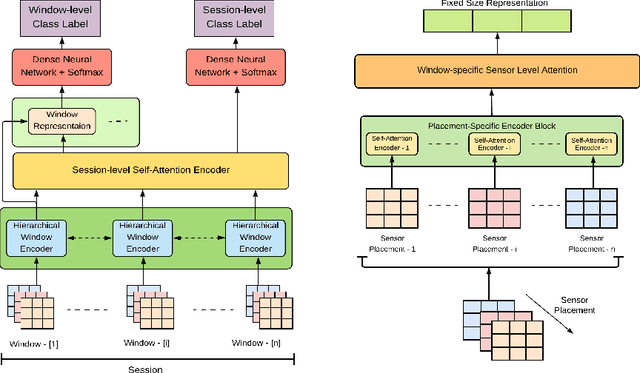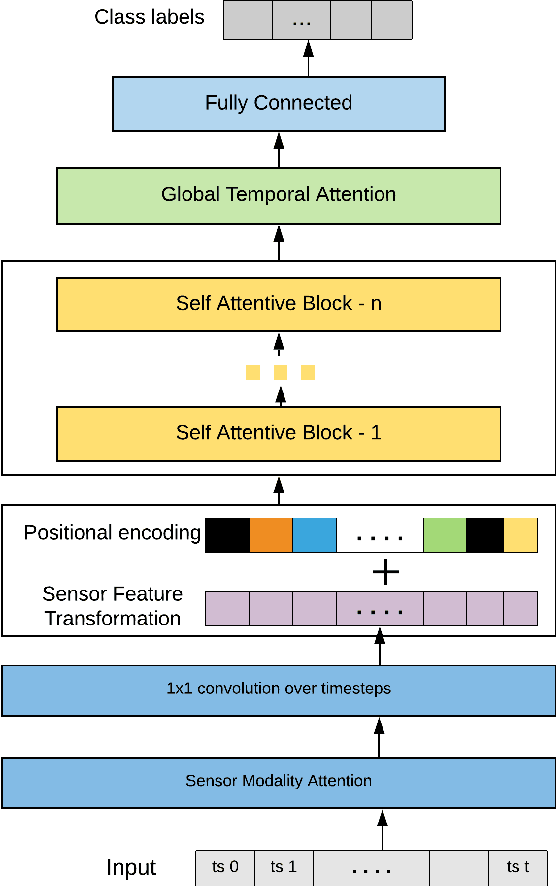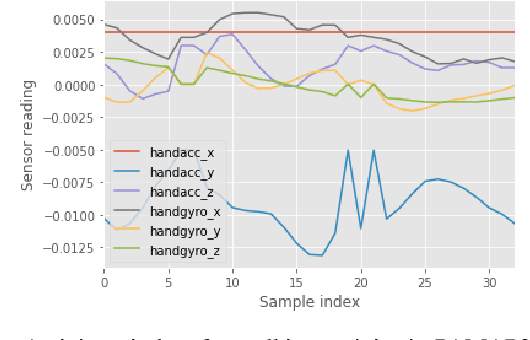M Tanjid Hasan Tonmoy
Hierarchical Self Attention Based Autoencoder for Open-Set Human Activity Recognition
Mar 07, 2021



Abstract:Wearable sensor based human activity recognition is a challenging problem due to difficulty in modeling spatial and temporal dependencies of sensor signals. Recognition models in closed-set assumption are forced to yield members of known activity classes as prediction. However, activity recognition models can encounter an unseen activity due to body-worn sensor malfunction or disability of the subject performing the activities. This problem can be addressed through modeling solution according to the assumption of open-set recognition. Hence, the proposed self attention based approach combines data hierarchically from different sensor placements across time to classify closed-set activities and it obtains notable performance improvement over state-of-the-art models on five publicly available datasets. The decoder in this autoencoder architecture incorporates self-attention based feature representations from encoder to detect unseen activity classes in open-set recognition setting. Furthermore, attention maps generated by the hierarchical model demonstrate explainable selection of features in activity recognition. We conduct extensive leave one subject out validation experiments that indicate significantly improved robustness to noise and subject specific variability in body-worn sensor signals. The source code is available at: github.com/saif-mahmud/hierarchical-attention-HAR
Human Activity Recognition from Wearable Sensor Data Using Self-Attention
Mar 17, 2020



Abstract:Human Activity Recognition from body-worn sensor data poses an inherent challenge in capturing spatial and temporal dependencies of time-series signals. In this regard, the existing recurrent or convolutional or their hybrid models for activity recognition struggle to capture spatio-temporal context from the feature space of sensor reading sequence. To address this complex problem, we propose a self-attention based neural network model that foregoes recurrent architectures and utilizes different types of attention mechanisms to generate higher dimensional feature representation used for classification. We performed extensive experiments on four popular publicly available HAR datasets: PAMAP2, Opportunity, Skoda and USC-HAD. Our model achieve significant performance improvement over recent state-of-the-art models in both benchmark test subjects and Leave-one-subject-out evaluation. We also observe that the sensor attention maps produced by our model is able capture the importance of the modality and placement of the sensors in predicting the different activity classes.
 Add to Chrome
Add to Chrome Add to Firefox
Add to Firefox Add to Edge
Add to Edge